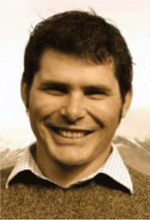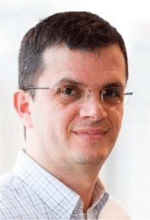An integrated approach to the Surat Basin stratigraphy
Mark Reilly A C , Suzanne Hurter A , Zsolt Hamerli A , Claudio L. de Andrade Vieira Filho A , Andrew LaCroix B and Sebastian Gonzalez BA Centre for Coal Seam Gas, Sir James Foots Building, The University of Queensland, Brisbane, Qld 4072, Australia.
B Energy Initiative, The University of Queensland, Brisbane, Qld 4072, Australia.
C Corresponding author. Email: m.reilly1@uq.edu.au
The APPEA Journal 59(2) 940-945 https://doi.org/10.1071/AJ18073
Accepted: 8 March 2019 Published: 17 June 2019
Abstract
The stratigraphy of the Surat Basin, Queensland, has historically been sub-divided by formation and unit nomenclature with a few attempts by other authors to apply sequence stratigraphy to existing formation boundaries. At a local- to field-scale, lithostratigraphy may be able to represent stratigraphy well, but at regional-scale, lithostratigraphic units are likely to be diachronous. To date, this lithology-driven framework does not accurately reflect time relationships in the sub-surface. An entirely new integrated methodological approach, involving well tied seismic data and sequence stratigraphic well-to-well correlations compared with published zircon age dates, has been applied to hundreds of deep wells and shallower coal seam gas wells. This method sub-divides the Surat Basin stratigraphy into defendable 2nd order to 3rd order sequence stratigraphic cycles and has required the use of an alpha-numeric sequence stratigraphic nomenclature to adequately and systematically label potential time equivalent surfaces basin-wide. Correlation of wells is the first step in building models of aquifers and coal seam gas fields for numerical simulation of fluid flow, which is necessary for responsible resource management. Lithostratigraphic correlations will overestimate the extent and hydraulic connectedness of the strata of interest. The result may be fluid flow models that do not represent a realistic pressure footprint of the flow. The present sequence stratigraphic method more accurately reflects the disconnectedness of sub-surface coals and sandstones (aquifers) on a field-to-field scale, adjacent field-scale, and basin-wide scale. It forms the basis for improved and more representative modelling of the sub-surface.
Keywords: coal seam gas, correlations, CO2 storage, seismic, sequence stratigraphy, Springbok Sandstone, Walloon Coal Measures, wireline.

Mark Reilly is an experienced petroleum geologist, having undertaken projects on the North West Shelf, the Bowen/Surat Basin, the Georgina Basin and Libya, amongst others. He has extensive experience in field geology and geomorphology and is particularly familiar with central Queensland, the Flinders Ranges and Lake Eyre. Mark holds a Bachelor of Applied Science in Geology from the Queensland University of Technology and a Bachelor of Science (Honours) from the National Centre for Petroleum Geology and Geophysics at the University of Adelaide. Mark leads industry field geology training courses and is a Senior Research associate at the Centre for Coal Seam Gas (The University of Queensland). Mark has published in AAPG special publication, EABS Journal and the APPEA Journal and has presented at many local and international conferences. |

Professor Suzanne Hurter has recently joined The University of Queensland and was appointed Energi Simulation Industrial Research Chair after a career in the oil and gas industry in various roles in Shell (Netherlands), Schlumberger (Netherlands and Australia), QGC (BG-Group) and Arrow Energy (Shell-Petrochina). Previously, she has worked in academia in Germany (Helmholtz Centre for Geosciences in Potsdam and the Leibnitz Institute of Applied Geophysics in Hannover) and Brazil (University of São Paulo). She holds a PhD (Geology) from The University of Michigan. Her research interests and activities include hydrocarbon maturation and thermal evolution of sedimentary basins, carbon sequestration, coupled modelling of flow, heat in porous and fractured media and using numerical modelling to evaluate and improve onshore gas production. |

Zsolt Hamerli has a First-Class Honours degree in Geology and over 17 years of professional experience in oil and gas exploration. Zsolt has worked as a seismic interpreter in several basins around the world and is currently at The University of Queensland’s Centre for Coal Seam Gas. |

Claudio Luiz de Andrade Vieira Filho is currently a Research Assistant at the Centre for Coal Seam Gas, The University of Queensland, Brisbane. He has Bachelor’s degree in Geology from the Federal University of Rio de Janeiro, Brazil. His research interests are sequence stratigraphy and geological modelling. |

Dr Andrew LaCroix is a Postdoctoral Research Fellow with the Energy Initiative at The University of Queensland and a Sequence Stratigrapher for the Deep Basin Aquifer Appraisal Project, seeking to assess potential for CO2 injection and storage. He is a Sedimentary Geologist interested in: (1) sequence stratigraphy, sedimentology and geological modelling for carbon storage; (2) the formation of fluid muds and their associated deposits in the nearshore realm; (3) the role of bioturbation in controlling porosity and permeability within siliciclastic reservoirs; and (4) climate and weather controls on depositional cyclicity in the modern rock record. He holds a PhD (Geology) from Simon Fraser University, Canada. |

Sebastian Gonzalez is a Senior Geologist and holds a MSc from the Australian School of Petroleum (University of Adelaide) and a BSc Hons Geology (Universidad de Caldas, Colombia). He gained experience in the oil and gas industry through several roles with Talisman Energy/Repsol, Schlumberger, McElroy Bryan Geological Services, Fault Seal Risk Pty in Australia and Ecopetrol in Colombia. He is currently a Senior Research Associate with the Energy Initiative at The University of Queensland and the Surat Deep Aquifer Appraisal Project for CO2 storage, using his expertise in seismic interpretation and large-scale geological modelling. |
References
Al-Husseini, M. (2009). Update to Late Triassic – Jurassic stratigraphy of Saudi Arabia for the Middle East Geologic Time Scale. GeoArabia 14, 145–186.Exon, N. (1976). ‘Geology of the Surat Basin in Queensland’. (Bureau of Mineral Resources, Geology and Geophysics: Canberra, ACT).
Hoffmann, K., Totterdell, J., Dixon, O., Simpson, G., Brakel, A., Wells, A., and McKellar, J. (2009). Sequence stratigraphy of Jurassic strata in the lower Surat Basin succession, Queensland Australian Journal of Earth Sciences 56, 461–476.
| Sequence stratigraphy of Jurassic strata in the lower Surat Basin succession, QueenslandCrossref | GoogleScholarGoogle Scholar |
Longley, I. M., Buessenschuett, C., Clydsdale, L., Cubitt, C. J., Davis, R. C., Johnson, M. K., Marshall, N. M., Murray, A. P., Somerville, R., Spry, T. B., and Thompson, N. B. (2002). The North West Shelf of Australia - A Woodside Perspective. In ‘The Sedimentary Basins of Western Australia 3. Proceedings of the Petroleum Exploration Society of Australia Symposium, Perth, WA’. (Eds. M. Keep and S. J. Moss) pp. 1–86. (PESA: Perth, WA) 86p.
Mitchener, B. C, Lawrence, D. A., Partington, M. A., and Bowman, M. B. J. (1992). Brent Group: Sequence stratigraphy and regional implications. In ‘Geology of the Brent Group, Special Publication 61.’ (Eds A. C. Morton, R. S. Haszeldine, M. R. Giles, S. Brown) pp. 45–80. (Geological Society: London.)
Shields, D., and Esterle, J. (2015). Regional insights into the sedimentary organisation of the Walloon Subgroup, Surat Basin, Queensland Australian Journal of Earth Sciences 62, 949–967.
| Regional insights into the sedimentary organisation of the Walloon Subgroup, Surat Basin, QueenslandCrossref | GoogleScholarGoogle Scholar |
Totterdell, J., Moloney, J., Korsch, R. J., and Krassay, A. A. (2009). Sequence stratigraphy of the Bowen–Gunnedah and Surat Basins in New South Wales Australian Journal of Earth Sciences 56, 433–459.
| Sequence stratigraphy of the Bowen–Gunnedah and Surat Basins in New South WalesCrossref | GoogleScholarGoogle Scholar |
Wainman, C., McCabe, P., Crowley, J. L., and Nicoll, R. S. (2015). U-Pb zircon age of the Walloon Coal Measures in the Surat Basin, southeast Queensland: implication for palaeogeography and basin subsidence. Australian Journal of Earth Sciences 62, 807–816.
| U-Pb zircon age of the Walloon Coal Measures in the Surat Basin, southeast Queensland: implication for palaeogeography and basin subsidence.Crossref | GoogleScholarGoogle Scholar |
Wainman, C. C., McCabe, P. J., and Crowley, J. L. (2018). Solving a tuff problem: Defining a chronostratigraphic framework for Middle to Upper Jurassic non-marine strata in eastern Australia using uranium–lead chemical abrasion–thermal ionization mass spectrometry zircon dates AAPG Bulletin 102, 1141–1168.
| Solving a tuff problem: Defining a chronostratigraphic framework for Middle to Upper Jurassic non-marine strata in eastern Australia using uranium–lead chemical abrasion–thermal ionization mass spectrometry zircon datesCrossref | GoogleScholarGoogle Scholar |
Wang, J., La Croix, A. D., Gonzalez, S., He, J., and Underschultz, J. (2019). Sequence stratigraphic analysis of the Lower Jurassic Precipice Sandstone and Evergreen Formation in the Surat Basin, Australia: Implications for the architecture of reservoirs and seals for CO2 storage. Marine and Petroleum Geology 102, 829–843.
| Sequence stratigraphic analysis of the Lower Jurassic Precipice Sandstone and Evergreen Formation in the Surat Basin, Australia: Implications for the architecture of reservoirs and seals for CO2 storage.Crossref | GoogleScholarGoogle Scholar |
Ziolkowski, V., Hodgkinson, J., McKillop, M., Grigorescu, M., and McKellar, J. L. (2014). Sequence stratigraphic analysis of the Lower Jurassic succession in the Surat Basin, Queensland — preliminary findings. Queensland Minerals and Energy Review Series. Department of Natural Resources and Mines, Brisbane.


